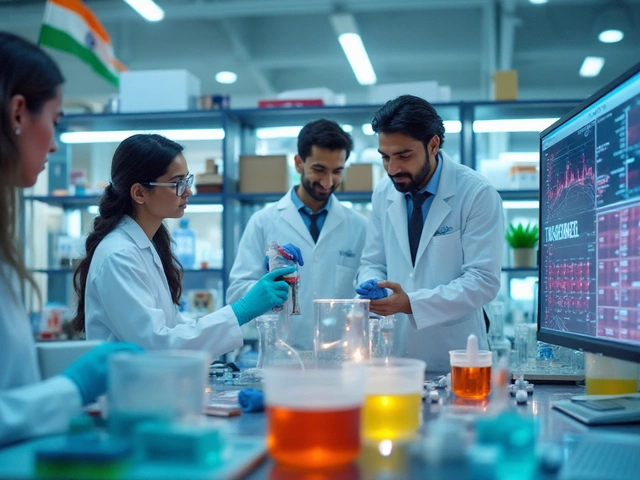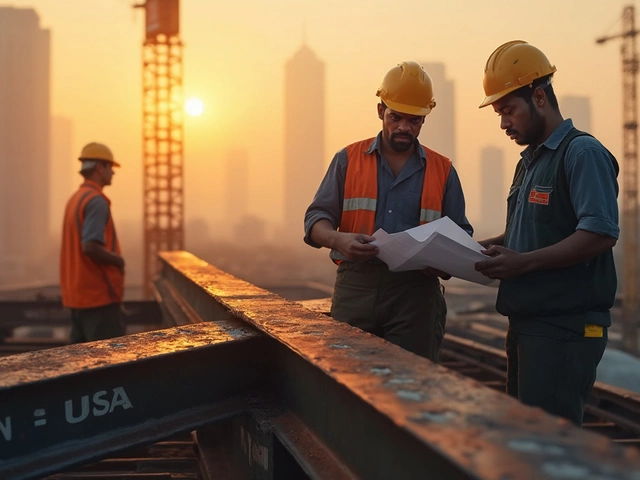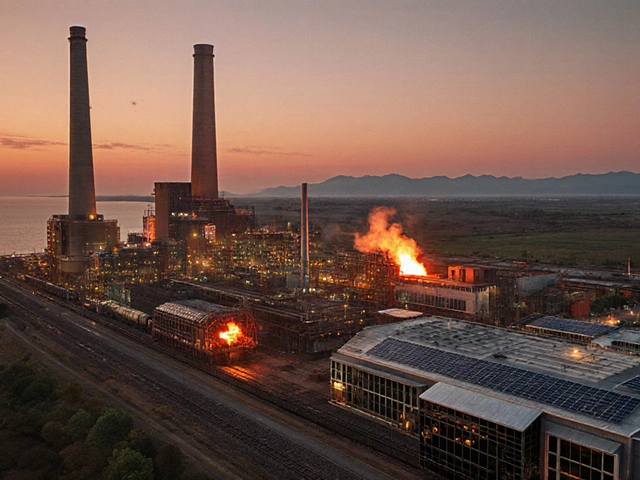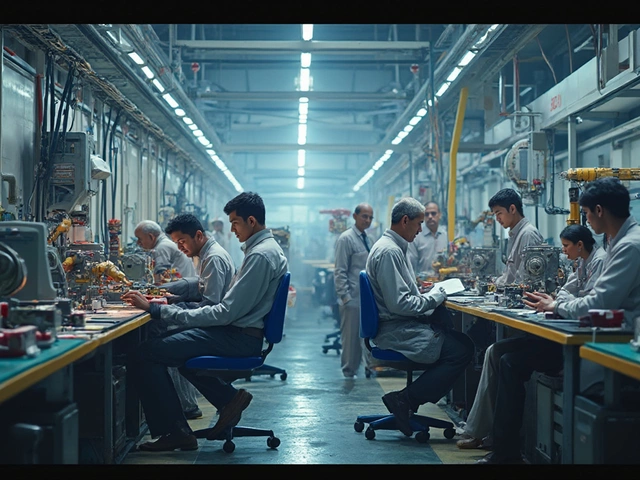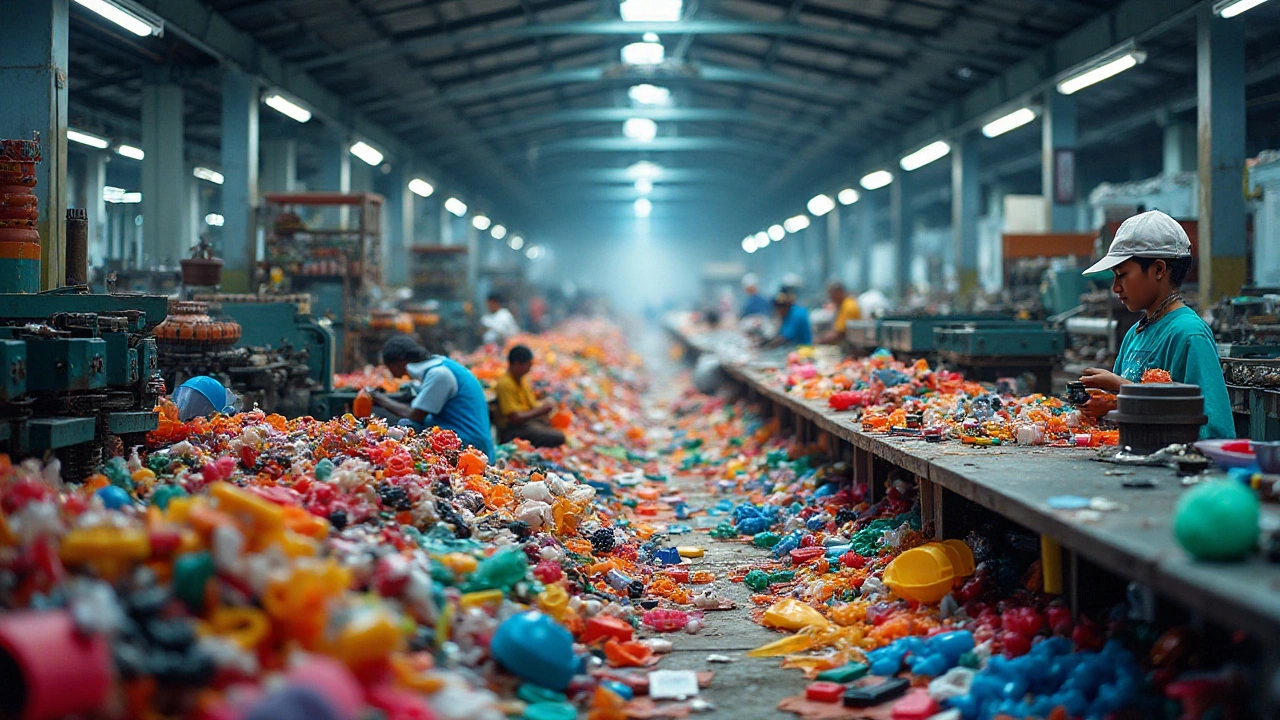
Plastic is everywhere—it's in the grocery store, the hardware shop, and likely the device you're reading this on. Its versatility and cost-effectiveness make it the go-to material for various industries. From protective packaging to stylish gadgets, the plastic comes in many forms and serves countless purposes.
The real question isn't just about why it's so popular but which industries crank out the most of this ubiquitous material. With packaging often taking the lion's share of production, other key players include consumer goods, automotive, and electronics sectors. As we explore these areas, we'll also uncover the environmental footprint each leaves and highlight promising solutions aimed at reducing the impact.
While plastic production continues to expand, especially in growing economies, the challenge of sustainability looms large. Join us as we delve into these topics, offering both insight and practical tips that can help consumers make more informed choices.
- The Dominance of Packaging
- Consumer Goods: A Major Player
- Automotive and Electronics Influence
- Environmental Consequences
- Innovations and Alternatives
- Tips for Reducing Plastic Use
The Dominance of Packaging
It's hard to walk down a supermarket aisle without being enveloped by plastic. The packaging industry stands as the apex predator in the ecosystem of plastic production. From the humble plastic bag to elaborate multi-layered pouches, packaging dominates the plastic landscape. The food sector relies on it to extend shelf life and protect freshness, while personal care products use it to assure hygiene and appeal. Each year, the global economy churns out millions of tons of plastic for packaging, and as consumerism accelerates, so does this output.
What's fascinating is the diversity within packaging styles. Flexible plastics such as films and wraps offer convenience with their lightness and moldability. Yet, the more rigid options like bottles and containers provide durability that's essential for transport and storage. Manufacturing companies continually innovate in this space, seeking materials that are lighter and stronger, while still cost-effective. These ever-evolving demands feed the unquenchable thirst for plastic, dictating trends and consumption patterns across the globe. A study by McKinsey & Company highlighted, "The packaging sector accounts for more than a third of global plastic production," illustrating its massive slice of the pie.
"Industry leaders must prioritize both innovation and sustainability," a recent industry report stated, highlighting a key concern for the future of packaging.
One cannot ignore the environmental impact that comes hand-in-hand with the dominance of packaging. The convenience of plastic packaging that has so captivated global markets also harbors a heavy downside—pollution. Single-use plastics often don't get recycled, ending up in landfills or, worse, the ocean. This has spurred a significant shift towards biodegradable options. Brands are now seeking out alternatives that cater to an eco-conscious audience. Nevertheless, while biodegradable plastics show promise, their adoption remains slow due to cost and scalability challenges. The challenge lies not just in creating sustainable options but in reshaping deeply entrenched consumer habits as well.
To address these challenges, governments and companies are employing various strategies. Consumer goods brands are now increasingly leaning into recycling programs and the use of recycled materials. There’s also a growing trend towards minimalistic packaging, which reduces waste at the source. Some companies have started using refill stations, allowing buyers to replenish their products without the need for additional plastic containers. These initiatives represent a major cultural shift as the industry grapples with its environmental responsibilities while striving to meet consumer demands efficiently.
The story of packaging is one of paradox—an industry that innovates at the brink of what is possible, yet struggles with the hefty environmental costs. As we look towards the future, it is essential for both producers and consumers to rethink how plastics are used and perceived. By harnessing the power of technology and the willingness to adapt, there’s potential to turn this massive production into a paradigm of sustainable growth.
Consumer Goods: A Major Player
In the vast world of plastic production, consumer goods stand tall as one of the most significant contributors. We've all heard how plastics are shaping our daily interactions, from the moment we wake up with a plastic toothbrush in hand to sipping coffee from a disposable cup. But have you ever stopped to wonder just how pervasive these materials are in the consumer goods industry? This sector encompasses everything from appliances to toys, personal care products, and clothing, each leveraged by the durable and adaptable nature of plastics. According to a report by Plastics Europe, the consumer goods industry utilizes nearly 20% of the world's plastic production, cementing its role as a substantial player in this space.
The allure of plastics in consumer goods is not just about cost; it's about versatility. Companies exploit the fact that plastics can be molded into any shape imaginable and combined with additives to enhance features such as heat resistance or flexibility. This customization fits seamlessly with the dynamic needs of consumer products, where fashion, trends, and functionality must coexist. Imagine the necessity of creating aesthetically pleasing designs that are affordable and lightweight, yet resilient enough to withstand daily wear—and plastics deliver. Many electronic devices, like smartphones and kitchen appliances, have casings made from polycarbonate or Acrylonitrile Butadiene Styrene (ABS), prized for their impact resistance and aesthetic qualities.
"Plastic is the material that makes the modern world—even more so in consumer goods which reflects our lifestyle choices." - John Smith, Environmental Scientist
The impact of consumer goods extends far beyond mere production figures. The environmental implications are deep, considering the life cycle of these plastic items. Once discarded, they often end up in landfills or oceans where they can take hundreds of years to decompose. This reality pushes many forward-thinking companies and innovators to search for sustainable alternatives. Initiatives like biodegradable polymers made from plant-based materials or recycled plastics are gaining momentum. Yet, scaling these solutions faces challenges, not least because they must match the economical and performance characteristics of traditional plastics.
Tackling Environmental Concerns
Recognizing the gravity of plastic waste, several international brands are taking steps toward sustainability. A well-known sports company, for example, has turned to recycled ocean plastics, proving that consumer goods and eco-consciousness can coexist. Their efforts bring to light not just an environmental responsibility but underline a strategic market direction towards sustainability-conscious consumers. For industries, it's a path laden with complexities, involving changing supply chains, educating consumers, and overcoming potential cost increases. These shifts, however, reflect a broader trend across many industries aiming at reducing their environmental footprint.
To comprehend the future trajectory of plastic use within the consumer goods industry, one only needs to look at innovation curves. The juxtaposition of traditional methods with emergent technologies like advanced recycling methods is pivotal. Technologies that break down post-consumer plastics into their original chemical state for reuse, known as chemical recycling, promise lower environmental impacts and more efficient recycling loops. As these processes evolve, they may effectively bridge the gap between current practices and a more sustainable future, making the consumer goods industry not only a major player in plastic production but also potentially part of the solution.
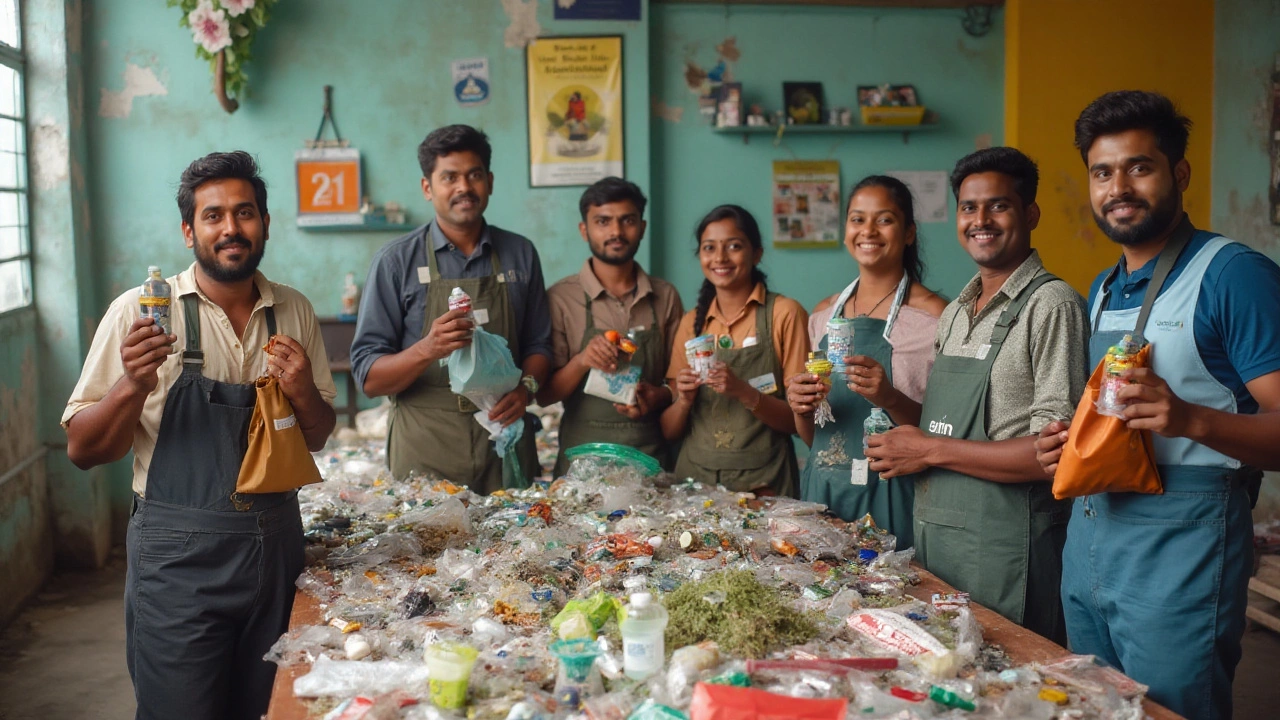
Automotive and Electronics Influence
The automotive and electronics sectors are two giants that play a significant role in plastic production. Both industries heavily rely on plastics to enhance performance and offer flexibility in design. In automobiles, plastics account for about 50% of the vehicle's volume, yet they remarkably only make up around 10% of its weight. This characteristic underscores the necessity of plastics in making cars lighter, which, in turn, contributes to reducing fuel consumption and emissions.
Pioneering automakers like Ford and BMW have long invested in research to incorporate more plastic materials into their vehicles, not just for efficiency but also for sustainability. They've experimented with bio-based plastics that reduce dependence on fossil fuels. A study conducted by the American Chemistry Council highlighted that lighter vehicles with plastics can potentially cut fuel use, equating to millions of gallons saved annually. It's a significant nod to the dual benefits impacting environmental and economic facets.
In the realm of electronics, plastics are indispensable. They serve as critical insulators for many electronic devices, providing safety and durability. Plastics are integral in the production of circuit boards, outer casings, wiring, and many other components. The weight reduction principle seen in the automotive sector parallels in electronics, allowing devices to become smaller and more portable. An example of such evolution is evident in the development of laptops and smartphones, where thinner and lighter materials are a constant demand.
The innovation doesn't stop there. With the rise of sustainable practices, there's a conscious shift towards using recycled plastics in electronics to minimize waste. For instance, renowned electronics companies have started initiatives to use recycled plastics in the manufacturing of their products.
A spokesperson from a leading electronics brand once stated, "By integrating recycled materials, we're not only reducing our carbon footprint but also setting a new standard for sustainable manufacturing."This highlights an industry-wide commitment to fostering a more sustainable future.
Both sectors face ongoing challenges concerning the environmental impact of plastic waste. Yet, they continuously innovate to improve the lifecycle of plastics, aiming to bridge the gap between function and environmental responsibility. Creative engineering solutions like using organic compounds and green chemistry approaches are being explored to produce biodegradable substitutes, promising a healthier relationship between technology and nature.
In essence, as the automotive and electronics industries continue to evolve, their reliance on plastics is likely to remain steadfast. They are ardently searching for the balance that meets consumer demands for quality and efficiency while making strides in sustainability. The future holds an exciting potential where traditional methods are challenged, leading to breakthroughs that could redefine the role of plastics in these pivotal industries.
Environmental Consequences
In the realm of plastic production, environmental consequences are pressing issues impossible to ignore. The staggering volume of plastics generated by industries like packaging and consumer goods has wide-reaching impacts on ecosystems, human health, and climate change. Every year, over 300 million tons of plastic are produced worldwide, and a large fraction inevitably ends up polluting our oceans and landscapes. This not only harms marine and terrestrial wildlife but also leads to a significant loss of biodiversity. Animals often mistake plastic debris for food, resulting in fatal blockages in their digestive systems.
The environmental fallout isn't confined to the terrestrial or aquatic regions alone. The production process itself is intensely resource-heavy, requiring vast amounts of energy and raw materials, predominantly derived from fossil fuels. This contributes heavily to carbon emissions, exacerbating the global warming crisis. As a result, industries bearing the brunt of the blame are under increasing scrutiny. Steps to mitigate these impacts are becoming critical. However, solutions are complex, necessitating international cooperation and progressive regulatory frameworks. According to a report by the International Energy Agency (IEA), emissions associated with producing plastic could account for 15% of the global carbon budget by 2050 unless substantial reforms are undertaken across the board.
Initiatives for change are steadily gaining traction. Corporate responsibility, alongside consumer advocacy, is driving a surge in research for biodegradable alternatives. However, the scalable implementation of these innovations remains a challenge. Recycling systems, though commonly touted as a solution, often fall short due to inefficiencies and inadequate infrastructure. As a testament to the urgency of the problem, Sir David Attenborough once said,
"We need to act now if we are to have any hope of tackling the enormous issues faced by plastic pollution."This highlights the universal recognition of the issue among conservationists. Policy directions are also shifting towards extended producer responsibility (EPR) strategies and circular economy principles, which aim to redesign systems around reducing waste and replenishing resources.
A more recent development is the emergence of technologies enhancing plastic recycling efficacy. Innovations such as chemical recycling, which breaks down plastics into basic monomers for reuse, are promising avenues that could revolutionize waste management approaches. Emphasizing a shift from a linear 'take, make, dispose' model to a regenerative model is vital. Only through such comprehensive alterations in production and consumption can the negative impact of plastic manufacturing on our environment be mitigated.
The environmental impact of plastic production is a complex web, entangled with economic, social, and political dimensions. As vital stakeholders continue to push for transformative changes, individual actions also play a crucial role. By understanding the ramifications of plastic use, both consumers and producers can take strides towards creating a more sustainable future. Acknowledging the full scope of these consequences is the first step towards advocating for robust, long-lasting solutions to the plastic challenge.

Innovations and Alternatives
With growing concerns about environmental repercussions, the spotlight is sharply focused on innovations within the plastic production industry. Scientists and innovators worldwide are developing materials and methods that promise reduced ecological impacts. One promising direction is the development of biodegradable plastics, which are designed to break down more easily after use. Made from natural sources like cornstarch or sugarcane, these materials are engineered to decompose more rapidly than traditional plastics, potentially reducing landfill buildup.
In addition to biodegradable options, recycled plastic innovations have also gained traction. The use of post-consumer materials in new products minimizes the need for virgin plastics. Companies like Adidas have launched initiatives to create sneakers made entirely from recycled ocean plastic, showcasing the potential of turning waste into fashionable, functional goods. This approach not only reduces environmental impact but also highlights the versatility and durability of recycled materials, reinforcing consumers’ confidence in sustainable options.
Advanced chemical recycling methods also offer a way to tackle plastic waste. By breaking down plastics at a molecular level, this technology allows for the recovery of base components, which can then be reused in new plastic products. This process holds promise due to its potential to handle a broader spectrum of plastic types, giving it a significant advantage over traditional mechanical recycling. According to industry experts, "chemical recycling could revolutionize the way we view plastic waste, making it a resource rather than a burden." While not yet widely adopted due to high costs, its development is one to watch in the coming years.
The shift towards plant-based plastics is another exciting avenue. By using renewable biomass sources, such as plant oils and starches, these materials are engineered to mimic the characteristics of traditional plastics without relying on fossil fuel resources. Researchers are continuously working to enhance the performance and scalability of these materials to align with conventional plastic products, potentially offering a pathway to significant reductions in carbon footprint associated with plastic manufacturing.
Consumer goods manufacturers are also stepping up, embracing the concept of reusability to minimize single-use plastic waste. Efforts include designing packaging specifically meant to be reused or repurposed, thus extending the product life cycle. Many brands are now exploring bulk refill models which allow customers to bring their own containers to purchase household items, thereby cutting down plastic use substantially. In essence, these initiatives rely heavily on changing consumer habits, encouraging a more conscientious approach to consumption.
Lastly, government policy and industry standards play pivotal roles in encouraging innovation and adoption of alternatives. Support for research and development, alongside incentives for companies that invest in sustainable practices, can significantly accelerate the transition to a more eco-friendly plastic manufacturing industry. With continued collaboration between governments, businesses, and researchers, the path towards sustainable plastic usage can become more achievable, showcasing the endless possibilities driven by human ingenuity and responsibility.
Tips for Reducing Plastic Use
Reducing plastic use seems daunting at first glance, but with a shift in mindset and some practical changes, it's entirely feasible. Start with evaluating your daily routines to spot opportunities for change. Consider bringing a reusable cloth bag during grocery shopping instead of relying on single-use plastic bags, which, according to the National Geographic, can take up to 500 years to decompose. Invest in a quality water bottle and a coffee mug to cut down on disposable cup usage. These simple steps not only help reduce your personal plastic footprint but also encourage a culture of sustainability among your peers.
"We do not inherit the earth from our ancestors; we borrow it from our children." - Native American Proverb
Another angle to consider is how products are packaged. Much of the plastic production goes into packaging, especially in the consumer goods sector. Opt for items with minimal or eco-friendly packaging. Brands are increasingly aware of consumer preferences for sustainable options and provide alternatives. Consider supporting these brands as they make a conscious effort to reduce their environmental impact. When shopping online, request limited packaging or consolidated shipping options.
A significant contribution can also be made by reducing reliance on plastic items at gatherings and events. Use real cutlery and dishes instead of disposable ones. For larger events, consider renting or borrowing tableware. These choices might seem small but collectively make a big difference. Encourage others to do the same by leading by example. When you share your eco-friendly choices on social media or in conversations, you inspire others to reflect on their habits.
Implementing broader lifestyle changes involves embracing the zero-waste movement principles. This can extend to bulk buying that cuts down packaging waste and making homemade versions of frequently used household products. Recycling is essential, but the focus should be centered on reusing and reducing what ends up in recycling bins. Cities like Toronto offer numerous community workshops on low-waste living techniques and homemade product tutorials, making it easy to get started.
Consider these small but actionable steps to gradually shift towards sustainable living. Participate in community clean-up drives or local advocacy groups focused on reducing plastic use. In 2021, a What We Waste survey pointed out that Canadians use nearly 15 billion plastic bags per year. Awareness and active community involvement can bring more significant changes at a local and national level. With conscious effort and community support, reducing plastic use becomes more accessible and impactful.
